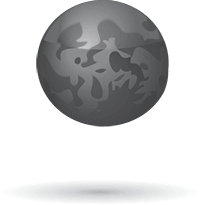David Bisett, along with his wife Terri, has long been associated with the Wimberley Players.
Both volunteered with the community theater as founding life members, board members, actors and everything else in between. After retiring from Texas State several years ago, Bisett took up a new passion, an additional outlet for self expression: leatherwork.
“All of my adult life my creative outlet was theater,” he recalled. “After my father’s death, I picked up his leatherworking tools and found that they held some importance for me. From that curiosity, a powerful passion was ignited that is a satisfying outlet to my somewhat obsessive- compulsive tendencies.”
Each morning, Bisett heads out to his studio in Woodcreek and loses himself in the focus required to produce tooled, dyed and hand-stitched leather items.
“There is a kind of freedom in a solitary pursuit like leatherworking that I didn’t have with acting and directing,” he continued. “The threads of obligation to the many people it takes to put on a performance are missing, so the level of stress is greatly reduced.”
Still, it takes a couple of years to build up the mental focus and muscular endurance in one’s fingers and hands to complete a successful design, Bisett explained.
“In the beginning, you can waste material and make mistakes and then rush to correct that mistake and then make another one. In time and with experience, those issues recede,” he said.
Bisett begins a project by selecting vegetable- dyed leather. Any other leather that is tanned using chromium sulphate cannot be tooled. He chooses or creates a design, prints it on transparent material and transfers it, but not before wetting the surface of the leather so that it can accept the lines of the design.
“Controlling the moisture content of the leather is something you never stop learning,” he commented.
Once the lines of the design are transferred onto the surface of the leather, he uses a knife to cut the lines into the leather itself. Then, he bevels them to create depth where it is needed, so that the eye detects forward and backward planes.
Burnishing comes next for designs that might feature faces —for example, where pressure from a burnishing tool can create shadows to suggest cheekbones and other three-dimensional features. Other tools stamp designs into the image with the tap of a hammer or the artist scores and shades the lines himself. It is a learned coordination of the hand and eye.
“For me, it isn’t talent at work here,” he said, “but the acquisition of craft. I can only hope that my hands and eyes hold up so that I can continue to develop my skills.”
Once the design is complete, the piece can be dyed and then sealed. If antiquing is desired, a paste is applied and then wiped off in areas where it is not wanted. (Antiquing is similar to the process of oxidizing in jewelry, it creates depth or makes the item look older.) Once the antiquing is complete, the edges of the leather are burnished to seal the fibers, and a final seal coat is applied.
As Bisett progressed from flat pieces to items that required assembly, a whole new set of skills had to be developed.
“When I began making padfolios, bags, and handbags, I learned the exacting nature of constructing something that had to withstand constant use,” he continued.
To construct one of the hand sewn handbags he makes, he must punch precisely 700 holes for the waxed polyester thread to pass through in order to sew the parts to each other. Each saddle stitch is meticulously tied and examined before moving on to the next one. Once the stitchery is complete, snap hooks, d-rings, swivel hooks, buckles and other metal implements are chosen to attach straps and other practical elements. At several stages in the process, the leather must dry or cure before being ready for the next step.
As his skills matured, so did his consideration for the images he chose.
“Choosing a design is a highly subjective endeavor. There is subject matter that I absolutely love. I can spend hours and hours scanning images for one that speaks to me,” he continued. “ I’ve been particularly inspired by tattoo art and Zentangle.”
A combination of meditation and art, Zentangle is an American method for drawing which promotes concentration and creativity while increasing a sense of well-being. It was developed in 2004 through the collaboration of Rick Roberts, a monk, and an artist, Maria Thomas.
To learn more about Bisett’s work, email him at [email protected].





